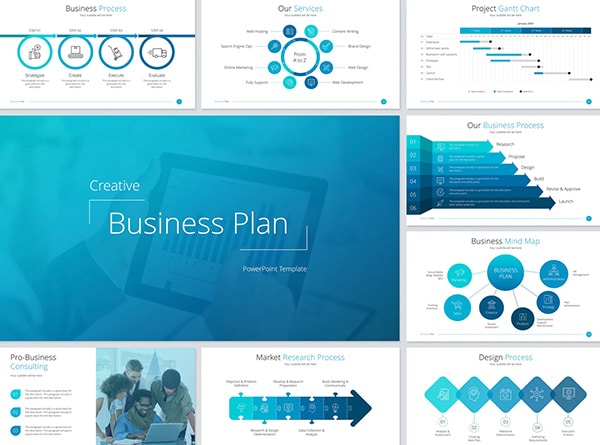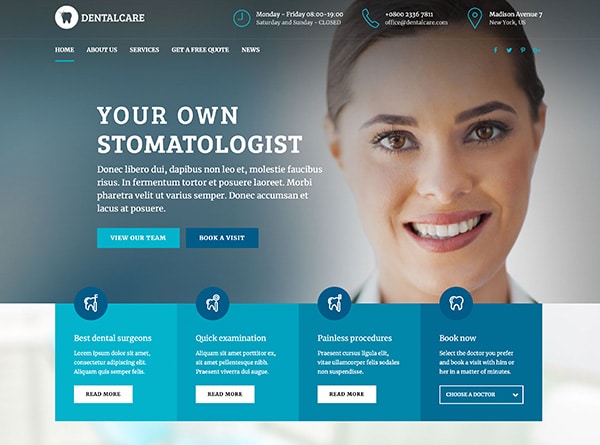
Have you ever viewed a website on your home computer and then wondered why it looks different on your mobile phone or tablet? If so, you are not alone. There are many people who still do not understand that there is a difference between a traditional, mobile and a responsive website. I’m excited to share my insights on the importance of mobile responsive website design. Today, having a website that adapts seamlessly to various devices and screen sizes is no longer a luxury, but a necessity.
What is Mobile Responsive Website Design?
In the past, websites were primarily designed for desktop computers, with a fixed layout and content that didn’t adjust well to smaller screens. However, the rise of smartphones and tablets has transformed the way we access and consume online information. Mobile devices have become the primary means of browsing the web for many users, and as a result, website design has had to evolve to meet this changing landscape.
Mobile responsive website design is the approach that ensures your website provides an optimal viewing and interaction experience across a wide range of devices, from desktops to smartphones and tablets. By adopting a responsive design, your website will automatically adjust its layout, content, and functionality to provide a seamless and user-friendly experience, regardless of the device being used.
Importance of Mobile Responsive Website Design
In today’s digital age, the importance of mobile responsive website design cannot be overstated. Here are a few key reasons why it’s essential for your business:
Improved User Experience: A mobile responsive website ensures that your visitors can easily navigate and interact with your content, regardless of the device they’re using. This enhances their overall experience and increases the likelihood of them engaging with your brand.
- Enhanced Search Engine Optimization (SEO): Search engines, such as Google, prioritize mobile-friendly websites in their search results. Having a responsive website can improve your search engine rankings, making it easier for potential customers to find you online.
- Increased Conversions: A well-designed mobile responsive website can lead to higher conversion rates, as users are more likely to complete desired actions (e.g., making a purchase, filling out a form) when the website is optimized for their device.
- Reduced Bounce Rates: If a website is not mobile-friendly, users are more likely to leave (or “bounce”) quickly, which can negatively impact your website’s performance and engagement metrics.
- Consistent Brand Experience: A mobile responsive website ensures that your brand’s visual identity, messaging, and overall user experience remain consistent across all devices, strengthening your brand’s recognition and credibility.
Key Differences Between Traditional and Responsive Websites
To better understand the importance of mobile responsive website design, let’s explore the key differences between traditional and responsive websites:
| Traditional Website | Responsive Website |
|---|---|
| Fixed layout and content that doesn’t adjust to different screen sizes | Flexible layout and content that adapts to various screen sizes and devices |
| Requires separate mobile version or app to provide a mobile-friendly experience | Single website that automatically adjusts to provide an optimal experience on any device |
| Typically slower load times and less efficient use of screen space on mobile devices | Optimized for fast load times and efficient use of screen space on all devices |
| Difficult to maintain and update, as changes need to be made to both desktop and mobile versions | Easy to maintain and update, as changes are reflected across all device versions |
| Provides a less consistent brand experience across different devices | Ensures a consistent brand experience across all devices |
Benefits of a Mobile Responsive Website
Investing in a mobile responsive website design can bring a wealth of benefits to your business. Here are some of the key advantages:
- Improved User Experience: As mentioned earlier, a mobile responsive website ensures that your visitors can easily navigate and interact with your content, regardless of the device they’re using. This enhances their overall experience and increases the likelihood of them engaging with your brand.
- Increased Conversions: By providing a seamless and user-friendly experience across all devices, a mobile responsive website can lead to higher conversion rates, as users are more likely to complete desired actions (e.g., making a purchase, filling out a form).
- Enhanced Search Engine Optimization (SEO): Search engines, such as Google, prioritize mobile-friendly websites in their search results. Having a responsive website can improve your search engine rankings, making it easier for potential customers to find you online.
- Reduced Maintenance and Development Costs: With a single, responsive website, you only need to maintain and update one version, rather than separate desktop and mobile versions. This can lead to significant cost savings in the long run.
- Consistent Brand Experience: A mobile responsive website ensures that your brand’s visual identity, messaging, and overall user experience remain consistent across all devices, strengthening your brand’s recognition and credibility.
- Improved Accessibility: Responsive design principles often align with accessibility best practices, making your website more inclusive and accessible to users with disabilities.
- Future-Proofing: As technology continues to evolve and new devices emerge, a mobile responsive website will be better equipped to adapt and provide an optimal experience, ensuring your website remains relevant and user-friendly.
How to Check if Your Website is Mobile Responsive
Determining whether your website is mobile responsive is a crucial first step in understanding your current online presence and identifying areas for improvement. Here are a few ways to check the mobile responsiveness of your website:
- Google’s Mobile-Friendly Test: Google provides a free online tool called the “Mobile-Friendly Test” that allows you to enter your website’s URL and receive a detailed report on its mobile-friendliness.
- Browser Developer Tools: Most modern web browsers, such as Google Chrome, Mozilla Firefox, and Microsoft Edge, have built-in developer tools that allow you to simulate different device sizes and screen resolutions to test your website’s responsiveness.
- Manual Testing: You can also manually test your website’s responsiveness by resizing your browser window or accessing your website on various devices (e.g., smartphones, tablets, laptops) to see how the layout and content adapt.
Tools for Mobile Responsive Site Checking
In addition to the built-in browser tools, there are several dedicated tools and services that can help you assess the mobile responsiveness of your website. Here are a few popular options:
- PageSpeed Insights: Provided by Google, this tool not only checks the mobile-friendliness of your website but also offers suggestions for improving its performance.
- Responsive Design Checker: This tool allows you to preview your website across a variety of device sizes and screen resolutions, providing a comprehensive view of its mobile responsiveness.
- Responsive Web Design Tester: This browser extension (available for Chrome and Firefox) lets you quickly test your website’s responsiveness by simulating different device sizes.
- Browserstack: This platform provides a wide range of real devices and browsers for you to test your website’s mobile responsiveness and cross-browser compatibility.
Common Challenges in Implementing Mobile Responsive Design
While the benefits of a mobile responsive website are clear, there are some common challenges that businesses may face when implementing this design approach:
- Complex Layout and Content Structures: Translating a desktop-centric website design into a mobile-friendly layout can be a complex and time-consuming task, especially for websites with intricate content hierarchies and layouts.
- Balancing Functionality and Usability: Ensuring that all the essential functionality and features of your website are accessible and user-friendly on mobile devices can be a delicate balance.
- Optimizing for Performance: Mobile devices often have limited processing power and bandwidth, so ensuring your website loads quickly and efficiently on these devices is crucial.
- Maintaining Consistent Branding: Adapting your website’s visual design and branding elements to work seamlessly across different devices can be a challenge, requiring a careful and thoughtful approach.
- Ongoing Testing and Maintenance: Regularly testing your website’s mobile responsiveness and maintaining it as technology and user behavior evolve is an ongoing process that requires dedication and resources.
Tips for Creating a Mobile Friendly Website
To overcome these challenges and create a truly mobile-friendly website, consider the following tips:
- Start with a Mobile-First Approach: Begin the design process by focusing on the mobile experience first, then scale up to larger screens. This helps ensure that the core functionality and content are optimized for mobile users.
- Prioritize Content and Functionality: Carefully evaluate the most important content and features on your website and ensure they are easily accessible and user-friendly on mobile devices.
- Optimize for Speed and Performance: Implement best practices for mobile optimization, such as compressing images, minimizing HTTP requests, and leveraging caching techniques.
- Embrace Responsive Design Principles: Utilize responsive design techniques, such as flexible grids, fluid images, and media queries, to ensure your website adapts seamlessly to different screen sizes and devices.
- Conduct Thorough Testing: Test your website’s mobile responsiveness across a variety of devices and screen sizes, and address any issues or inconsistencies that arise.
- Continuously Monitor and Iterate: Regularly monitor your website’s performance and user engagement on mobile devices, and make adjustments as needed to ensure an optimal experience.
Best Practices for Mobile Responsive Website Design
To create a truly effective and user-friendly mobile responsive website, consider the following best practices:
- Simplify Navigation: Streamline your website’s navigation to make it easy for mobile users to find and access the information they need.
- Optimize Content Presentation: Use a clear, concise, and scannable content structure that is easy to read and digest on smaller screens.
- Leverage Responsive Typography: Ensure that your website’s text is legible and easy to read on mobile devices by using responsive typography techniques.
- Optimize Images and Media: Compress and resize images and media to reduce load times and ensure they display correctly on mobile devices.
- Enhance Interactivity: Incorporate touch-friendly elements, such as larger buttons and intuitive gestures, to improve the user experience on mobile devices.
- Provide Seamless Cross-Device Functionality: Ensure that your website’s key features and functionality work consistently across all devices, providing a cohesive user experience.
- Implement Responsive Web Design Patterns: Leverage established responsive web design patterns, such as the “mobile-first” approach, the “hamburger” menu, and the “sticky” header, to create a familiar and user-friendly mobile experience.
- Continuously Test and Iterate: Regularly test your website’s mobile responsiveness, gather user feedback, and make ongoing improvements to ensure an optimal mobile experience.
Conclusion: Embracing the Power of Mobile Responsive Design
Today, having a mobile responsive website is no longer a luxury, but a necessity for businesses of all sizes. By embracing the power of mobile responsive design, you can unlock a wealth of benefits, including improved user experience, increased conversions, enhanced search engine optimization, and a consistent brand presence across all devices.
Remember, the key to success lies in understanding the differences between traditional and responsive websites, identifying and addressing common challenges, and implementing best practices for mobile-friendly design. By taking a proactive and user-centric approach to your website’s mobile responsiveness, you can position your business for long-term success in the ever-evolving digital world.























